The Artists of Buffalo's Willert Park Courts Sculptures
(aka A.D. Price Courts, 406 Jefferson Avenue)
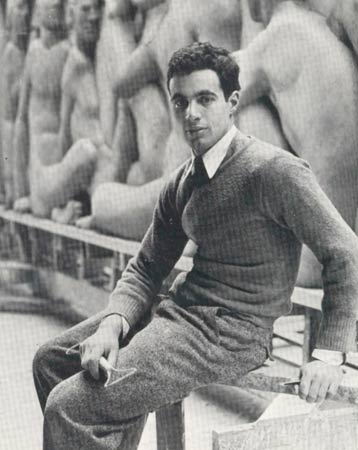
Robert Cronbach, 1930s. Courtesy of Maria Espinosa.
Robert Cronbach (1908-2001) was a 31 year-old professional sculptor when he was awarded the task of creating architectural sculptures for a federal housing project in Buffalo. He had been hired by the WPA (Works Progress Administration) in 1936 and was on loan to the FAP (Fine Arts Project) for the Willert Park project. The weekly salary for artists in the New York City program of the FAP was $23.50 per week, the highest in the nation.
He was born in St. Louis and studied sculpture at the St. Louis School of Fine Arts and the Pennsylvania Academy of Fine Arts. In 1930 he worked as an assistant to the sculptor Paul Manship.
His commissions included sculptures and fountains at the United Nations General Assembly Building and the Fashion Institute of Technology and the Federal Office Building in St. Louis.
Mr. Cronbach had his first solo show at the Hudson Walker Gallery in New York in 1940 and exhibited for many years with the Bertha Shaefer Gallery. He taught at Adelphi College in Garden City, NY from 1947 to 1961 and was also an instructor at the Skowhegan School of Painting and Sculpture in Maine, serving as chairman of the school's board of governers from 1975 to 1982. (Informatoin taken from his NYT obituary, 12/24/01)
Robert Cronbach was a political activist as were so many artists working during the Depression. He said of his employment, “The Project sculptor felt he was part of an important art movement; that his work would be seen by, first, his peers, and also by a fair section of the public and the art world.”
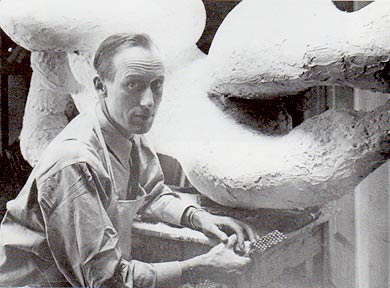
Harold Ambellan, 1937. Courtesy of Zoe Ambellan
Harold Ambellan (1912-2008) was 27 and a professional artist when Robert Cronbach enlisted his assistance with the Willert Park Court Projects sculptures.
Born in Buffalo, he moved to New York City in 1930 and studied at the Art Student League. During that time he met Woody Guthrie, Pete Seeger, and Led Belly, performing with them in his free time. He continued to perform folk music thorughout his long life. Prior to service in the Navy, Mr. Ambellan was a founder of the United Sculptors of America and, in 1941, served as president of the Sculptors Guild of America. He exhibited in the Museum of Modern Art, the Metropolitan Museum of Art, and the Academy of Fine Arts in Philadelphia.
According to his daughter, Mr. Ambellan was engaged in leftist activities that brought him undue attention during the McCarthy era. As a result, he moved to France permanently in 1956 where he enjoyed a long career as a artist in several media. He continued to exhibit in the U.S. in Chicago and New York, as well as in Rome and Paris and Germany.
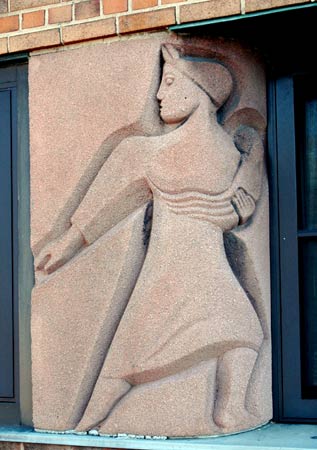 |
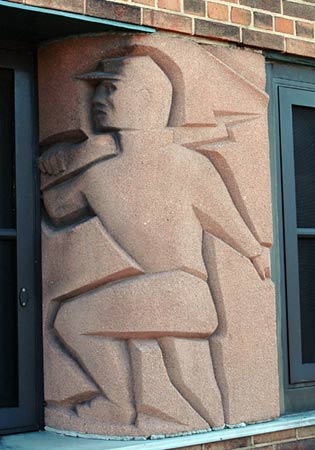 |
In an essay nearly thirty years later Robert Cronbach said, "By the end of 1938 very few non-relief artists remained on the Project. ...I was kept on because of a special situation. The Project had an opportunity to make some sculpture for the Willert Park housing project, which was a United States Housing Authority-assisted program in Buffalo. The sculptor would have to be self-supervised as the Buffalo WPA/FAP was not staffed or equipped to handle this work. For this reason I was kept on the sculpture division until the job was finished. I returned to New York during the summer of 1939.
"In the Willert Park situation the phrase 'self-supervised' was no empty label. I planned the sculpture with an architect, found a suitable vacant city-owned building and arranged for its use as a studio, worked out the casting and installation procedures for the tamped concrete sculpture with the concrete contractors who were working on the housing project, and brought a fellow Project sculptor, Harold Ambellan, from New York to join me in carrying out the work. Naturally, the New York City project had to approve all the important esthetic or procedural decisions, but except for the initial sketches this was done at a distance and rather infrequently." [From The New Deal Art Projects: An Anthology of Memoirs, Francis O'Connor 1972)
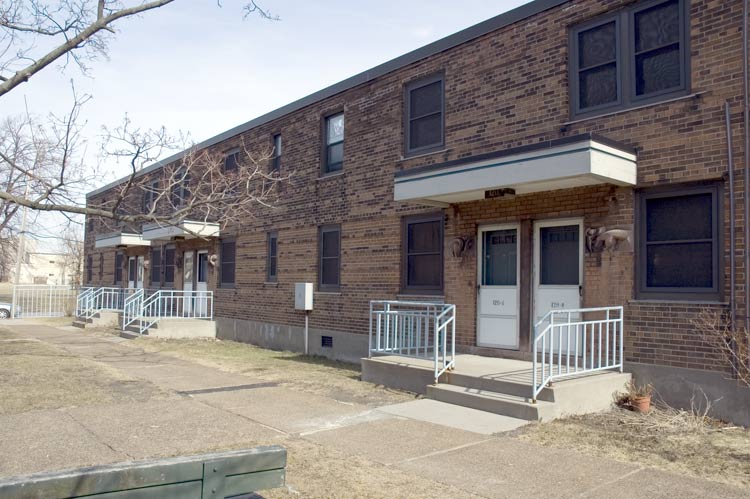
2009 view of one of the courts, showing the 29" x 15" reliefs installed at the side of each apartment door.
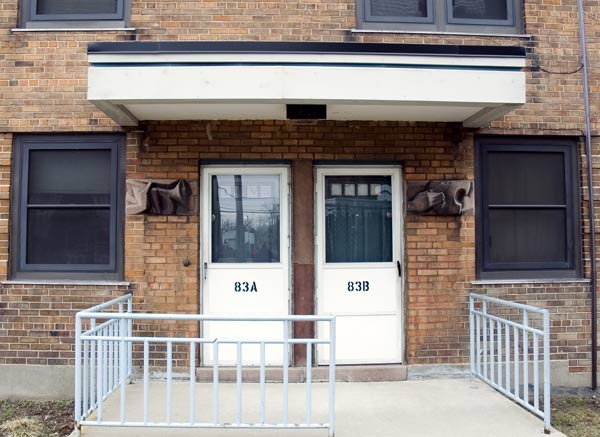
2009 Detail of a the "Music" pair as installed. In total there were six pairs, repeated over each of the 7 court.
Use the controls below to browse through them.
Cronbach spoke of the style of his work and that of Harold Ambellan, "A number of sculptors fascinated by cubism and abstract sculptural qualities and at the same time wishing to project a clear, obvious, dramatice image, tried to evolve a synthesis based” the 1930s style of sculptor Lippy Lipchitz." At its best, he said, it was "probably the nearest thing to a Project style."
Robert Cronbach listed a number of architectural sculpture projects that he thought artistically successful. Among them was the project for Willert Park Courts, executed by he and Harold Ambellan.
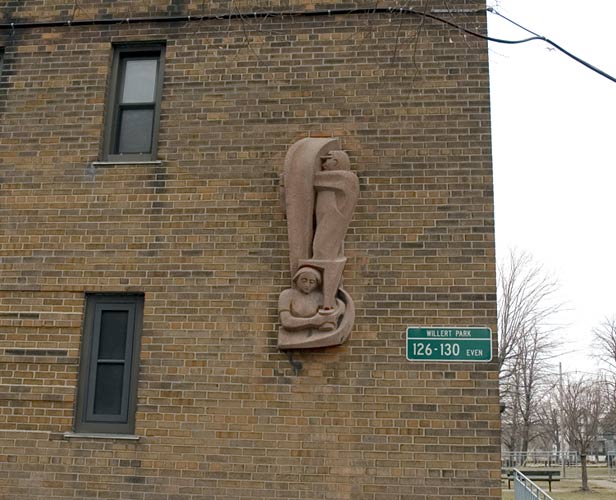
At the main axis of the courts are four 6' 8" high reliefs. Detailed views below.
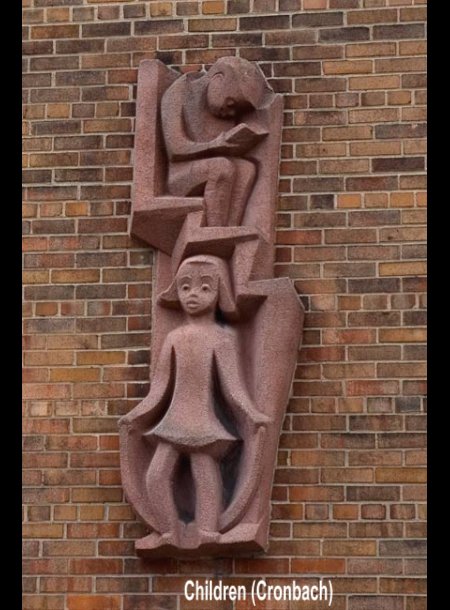
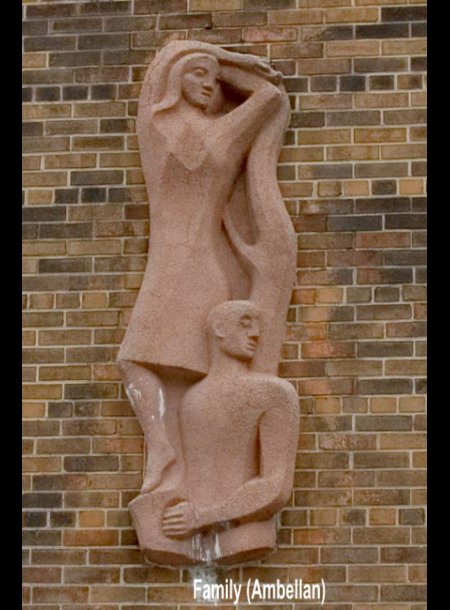
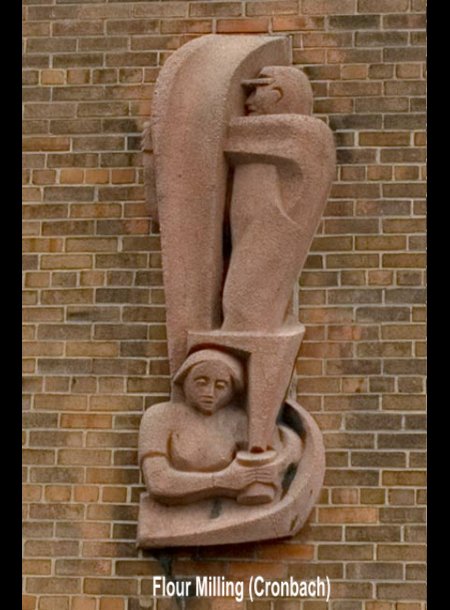
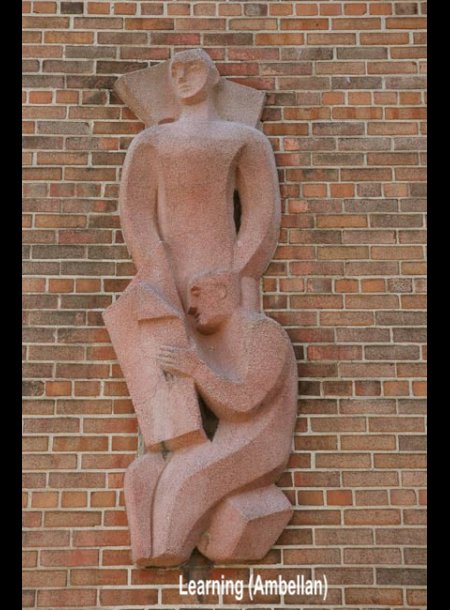
Information for this story has been gathered from number of academic sources, but special thanks are due to Maria Espinosa, Robert Cronbach's daughter and to Zoe Ambellan, daughter of Harold Ambellan for sharing history of their artist fathers.
To learn about a family that lived in the Willert Park apartments, look here.
